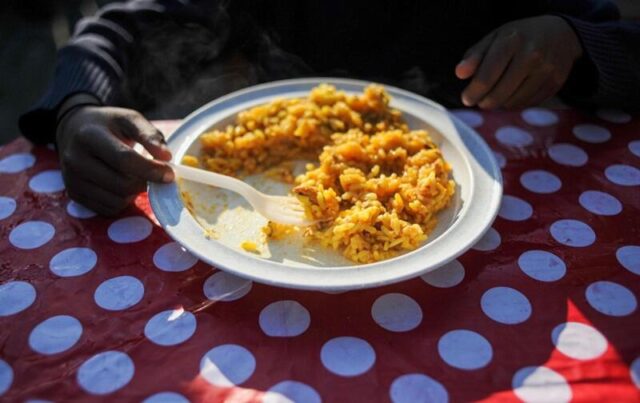A Shoprite food index report released this week projects that by 2025 nearly half of South Africa’s population will be food insecure, with 48.96% of the population potentially not having enough to eat. .
A PENSIONER has described the daily struggle to put food on the table for his family of seven.
With the rising cost of living, families are struggling to buy necessities, including food, and a Shoprite food index report has projected that it will only get tougher.
The report, released on Monday, projects that by 2025 nearly half of South Africa’s population will be food insecure, with 48.96% of the population potentially not having enough to eat.
This week, a grandfather, who did not want to be named, described the challenge to feed himself, his wife, two adult sons, his daughter-in-law and two grandchildren.
He said both his sons and daughter-in-law were unemployed and the family relied on his old-age grant and the little income his wife made.
“It’s difficult because my sons have just not been able to secure employment. Every month we struggle as we have to pay bills and then see if we have money left over for food, which is almost nothing. I’m collecting a social grant and my wife earns very little.
“It’s difficult to make ends meet. Sometimes we have to borrow food or money from friends and family, or face the possibility of going to bed hungry.”
He added that his grandchildren were in school, and these costs also added up.
“We do collect the child support grant for both my grandchildren, but that is just enough to cover their school expenses.
“We sometimes just wait for somebody to bring clothes and grocery hampers. I also am not well and need transport money to go to hospital.”
The Shoprite report said that in South Africa, 70% of children were born into poverty and by age five one in four suffered from stunted cognitive and physical development due to malnutrition.
The food index leverages data on food insecurity from World Data Lab. The index added that one in five South African households didn’t know where their next meal would come from.
“In KwaZulu-Natal, 53% of the population will be food insecure by 2025. Despite the grim numbers, the incidence of people escaping food insecurity is improving. In 2020, 52% of South Africa was food insecure.
“The projections for 2025 show this declining to just under 49%.”
Sanjeev Raghubir, head of Sustainability and CSI at the Shoprite Group, said that to deal with the problem, people needed to better understand it, and the Food Index report provided some insight.
“Although the modelling shows an improvement by 2025, the reality is that in two years’ time just under half the population will still be struggling with hunger.
“That’s why we must urgently escalate the rate of people escaping food insecurity. Doing so will improve not only their prospects, but those of the country.
“That’s why we are intensifying our efforts to reduce hunger, a crisis that demands a collaborative effort from agriculture, manufacturers, retailers, government, NGOs and anyone who has the capacity to #ActForChange.”
Evashnee Naidu, a provincial director of Black Sash, said that the organisation had seen year-on-year the increase in food prices and the lack of inflationary increases with regard to social grants, which further depleted the value of the grant.
“The poor have to make tough choices about what they can eat, and some even consider when or if they can eat,” she said.
Naidu added that the projection by the report points to what could happen if the government did not intervene.
“South Africa needs to ensure a holistic response to food security in our country and to ensure that our social security system keeps up with the inflationary costs of food, as so many of our people are already experiencing a cost-of-living crisis.”
Dr Kelle Howson, a senior research consultant at the Institute for Economic Justice, said levels of hunger were worsening in South Africa due to a very high rate of food price inflation.
“Several studies released this year have pointed to widespread food insecurity, and it is likely that more people now fall under the food poverty line.”
Howson added that Statistics South Africa and a recent study by researchers at Wits University both estimate the proportion of households facing food insecurity to be at about 20%.
“We see the devastating consequences of this in rates of stunting and malnutrition in children, as well as the recent desperate and tragic acts of mothers who are unable to feed their children.”








